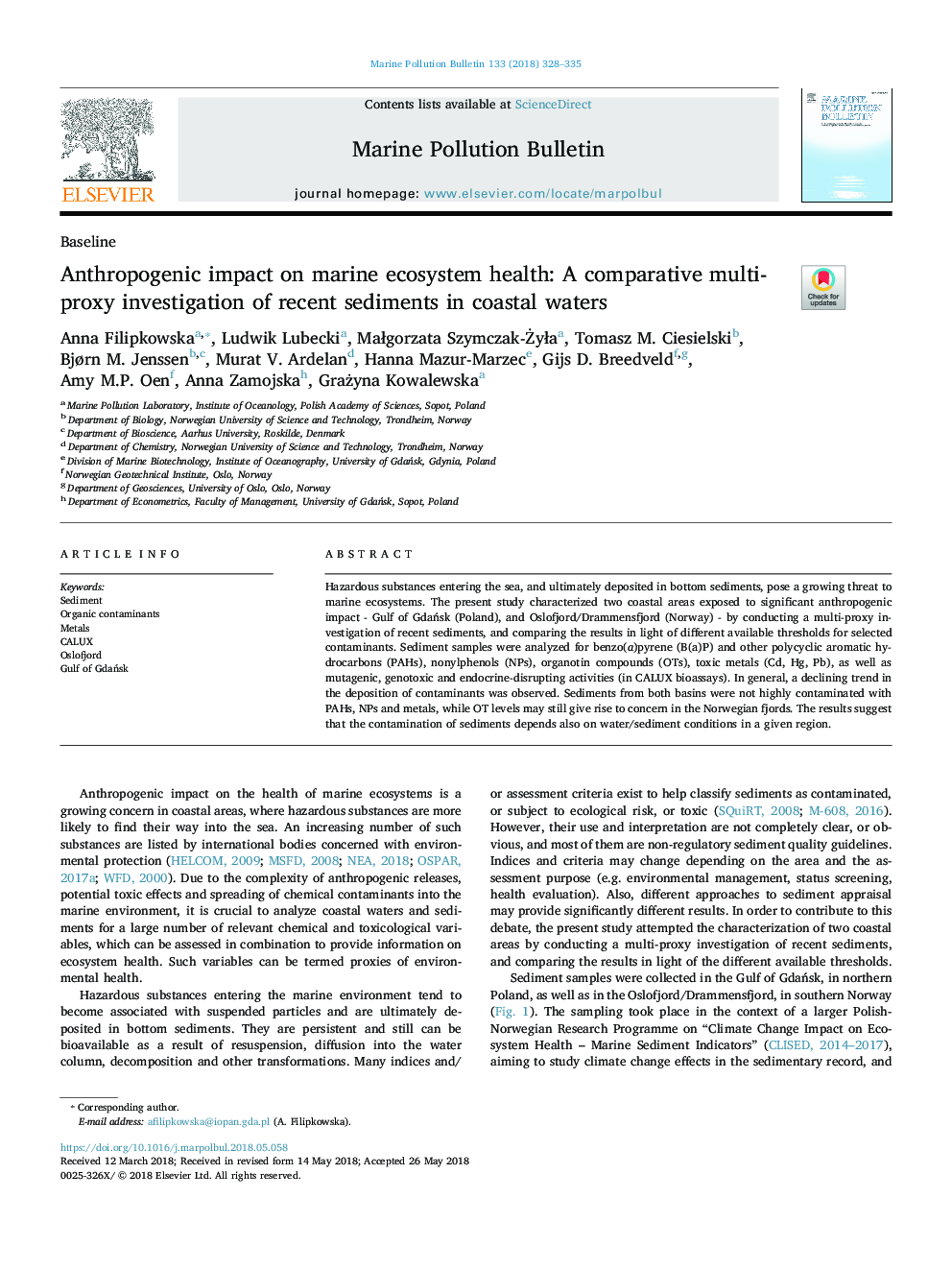| Article ID | Journal | Published Year | Pages | File Type |
|---|---|---|---|---|
| 8871442 | Marine Pollution Bulletin | 2018 | 8 Pages |
Abstract
Hazardous substances entering the sea, and ultimately deposited in bottom sediments, pose a growing threat to marine ecosystems. The present study characterized two coastal areas exposed to significant anthropogenic impact - Gulf of GdaÅsk (Poland), and Oslofjord/Drammensfjord (Norway) - by conducting a multi-proxy investigation of recent sediments, and comparing the results in light of different available thresholds for selected contaminants. Sediment samples were analyzed for benzo(a)pyrene (B(a)P) and other polycyclic aromatic hydrocarbons (PAHs), nonylphenols (NPs), organotin compounds (OTs), toxic metals (Cd, Hg, Pb), as well as mutagenic, genotoxic and endocrine-disrupting activities (in CALUX bioassays). In general, a declining trend in the deposition of contaminants was observed. Sediments from both basins were not highly contaminated with PAHs, NPs and metals, while OT levels may still give rise to concern in the Norwegian fjords. The results suggest that the contamination of sediments depends also on water/sediment conditions in a given region.
Related Topics
Physical Sciences and Engineering
Earth and Planetary Sciences
Oceanography
Authors
Anna Filipkowska, Ludwik Lubecki, MaÅgorzata Szymczak-Å»yÅa, Tomasz M. Ciesielski, Bjørn M. Jenssen, Murat V. Ardelan, Hanna Mazur-Marzec, Gijs D. Breedveld, Amy M.P. Oen, Anna Zamojska, Grażyna Kowalewska,
